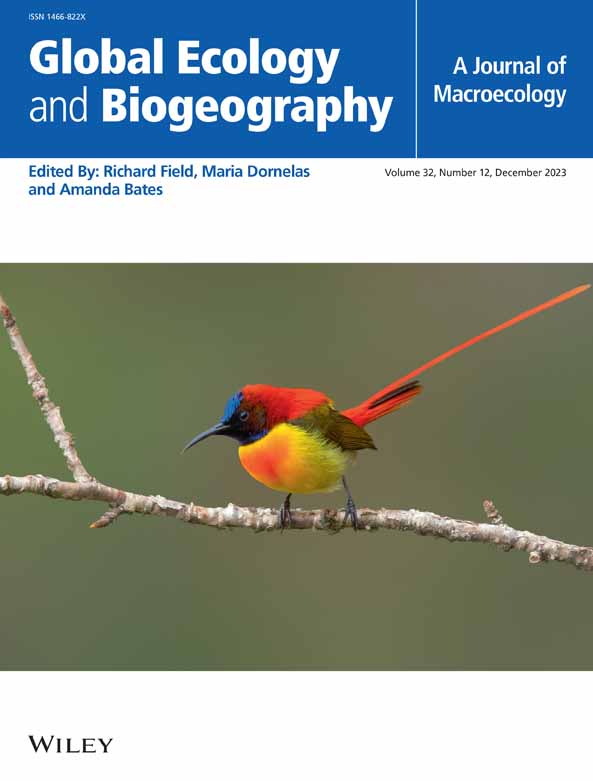A Global Regionalisation of Tree Functional Capacity
Abstract
Aim
Understanding the global distribution of tree functional diversity is essential for predicting ecosystem responses to environmental change. Traditional biogeographic regionalisations classify ecosystems based on species composition and climate but overlook functional traits, which directly govern processes such as carbon storage, nutrient cycling and productivity. Here, we present the first global functional regionalisation of tree-inhabited systems into functionally distinct regions based on tree traits rather than taxonomic or climatic boundaries.
Location
Global, covering forests, savannas and grasslands.
Time Period
Present.
Major Taxa Studied
Trees.
Methods
We compiled over 5 million tree species occurrences and associated functional traits related to photosynthesis, growth, reproduction, structure and physiology. Using a stability-based clustering approach, we identified functional macro-regions (85% variance explained), meso-regions (90%) and micro-regions (99%). We also identified important traits discriminating these regions and assessed the relative influence of climate and phylogeny in shaping these functional boundaries.
Results
We identified five major functional macro-regions: Boreal, Cool Temperate, Warm Temperate, Neotropical and Paleotropical. Boreal and temperate macro-regions align closely with climatic zones, while tropical macro-regions are structured primarily by evolutionary history rather than moisture availability. Functional differentiation is driven by photosynthetic and reproductive traits across scales, with structural, growth and physiological traits dominating at macro, meso and micro levels, respectively. Phylogenetic distance explains 68% of the functional divergence between Neotropical and Paleotropical macro-regions, whereas environmental differences drive 42%–44% of the variance between tropical and temperate regions.
Main Conclusions
Our study provides one of the first global functional classifications of tree-inhabited ecosystems, revealing that climate primarily structures temperate and boreal regions, while evolutionary history drives tropical functional diversity. These findings offer a new perspective on global biogeography and ecosystem resilience, with implications for biodiversity conservation and climate adaptation strategies.


 求助内容:
求助内容: 应助结果提醒方式:
应助结果提醒方式:


